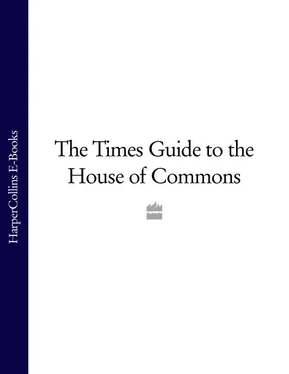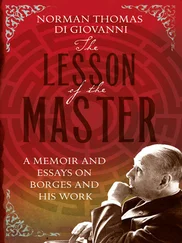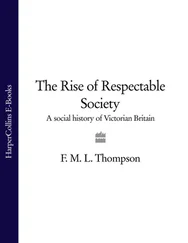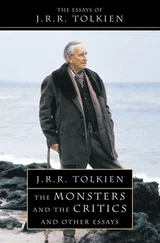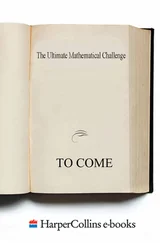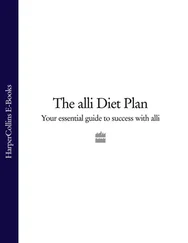In 1981 I was lucky to be among the seven backbenchers whose names were drawn from a hat, and who were invited to attend the Prince of Wales’s wedding to Diana Spencer. Sitting among the huge congregation in St Paul’s Cathedral I heard, over the loudspeakers, the questions – “Do you take this woman?” – and the responses. At each “I do” there came into the Cathedral, faintly but audibly, the distant-sounding roar of the crowds of tens of thousands, like the faint rumble of an ocean lapping at the steps of St Paul’s.
That echo was for me the most moving thing of all. I wish I had followed its logic down Fleet Street, the Strand and Whitehall, to Westminster, and understood then what I understand now: that unless when you advance a case at Westminster you can hear in your imagination, and your fellow MPs can hear in theirs, that faint roar of approbation from the sea of public opinion, then prepare for the kindly obituaries many decades hence, after your knighthood and your sobriquet “veteran backbench MP” have long been earned. From the obituarist’s phrase book will come those old favourites “brave thinker”, “keen intellect”, “gadfly”, “never really a team player”, “maverick”, “radical theorist”, “principled debater”…we can almost hear the chamber emptying as we read.
In less smart phraseology than the famous passage quoted above, Burke expressed the opposite view, but a truer one, when he wrote: “To follow, not to force the public inclination; to give a direction, a form, a technical dress, and a specific sanction, to the general sense of the community, is the true end of legislature.” Matthew Parris was Conservative MP for Derbyshire West from 1979 to 1986 and is a former parliamentary sketch writer for The Times.
The old era
The man who detoxified the Conservative brand
Francis Elliott
Deputy Political Editor
David Cameron best reveals his character and that of his political project at moments of defeat. He felt the blow of losing his first attempt at becoming an MP keenly in 1997, analysed correctly the reasons for the Tories’ abject performance in 2001 but then misjudged why Michael Portillo’s subsequent leadership bid fell short. The failure of Iain Duncan Smith’s leadership forced him to reconsider his attitude to modernisation and his last doubts were extinguished by the third successive Conservative defeat under Michael Howard.
During his own period as Leader of the Opposition, Mr Cameron was at his best when he faced the greatest danger, tacking and trimming and finally outmanoeuvring Gordon Brown in the autumn of 2007 to scare the new Labour leader off an early election. When at last the poll was called in May 2010, Mr Cameron best showed his political gifts not during the campaign but in the days afterwards, converting an inconclusive result into a decisive outcome.
But if defeat best reveals the nature of the man and his project, it is in success that his closest friendships and alliances have been forged. The first of these is his relationship with Steve Hilton, whom he first met in the late 1980s when both worked for what was then Conservative Central Office. Their decades-long conversation about the Tories, their strengths and weaknesses, their prejudices and favourites, is the dialogue that most drives the project. At first sight the two men could hardly be more different. Mr Cameron’s privileged background, social assurance and cultural Conservatism fitted him smoothly for the Conservative Research Department in the Tories’ old HQ in Smith Square. Mr Hilton, the son of Hungarian immigrants and a scholarship boy who became a Conservative only at university, was less obviously a CRD Tory boy. Mr Cameron favoured red braces; Mr Hilton was known to wear a “voluminous poncho”.
It is what they share, however, not what they do not, that most influences the modern Conservative Party. A passionate belief in the primacy of the individual over the collective – open in Mr Hilton’s case, partly shielded from view in that of Mr Cameron – is their first shared value. Mr Hilton, whose family endured the Communist repression of Budapest in 1956, has a visceral dislike of the statist mindset.
Neither, however, is a straightforward economic liberal. The purpose of freeing individual action is so that people can better deliver social goods. And the State has a role in fostering and encouraging those other institutions, such as marriage, that help people to share responsibility for one another. The pair have tried a number of attempts to rebrand these strands of right-wing philosophy during their period at the helm of the Conservative Party. It has been known variously as “modern, compassionate Conservatism”, the “post-bureaucratic age” and finally “the Big Society”. For the second big thing that Mr Cameron shares with his closest ally is an abiding interest in and facility for political communication. Both schooled according to the exacting standards of a Margaret Thatcher-era CRD, they write crisply and without jargon or cant. In the run-up to the 1992 general election the pair were selected to manage the relationship with the Tories’ advertising agency, Saatchi & Saatchi.
There is one final shared attribute: their age. They were part of a Smith Square “brat pack” in 1992 and were still young enough to weather the wilderness years so that they could emerge as part of the “next generation” just as new Labour was running out of steam.
In Stafford Leisure Centre in the early hours of May 2, 1997, however, those years outside power were just beginning. By then 31, the Conservative candidate, left hanging around as a loser at the count, knew that losing was no personal disgrace and certainly not a career-ending moment. Nonetheless, he felt it keenly when an elderly woman approached him in tears as the scale of the Tories’ national defeat became clear. “I don’t want to die under a Labour government,” she said. The misery of that exchange still lingered when he wrote of it many years later.
Mr Cameron has suffered personal setbacks. The influence of the birth, life and death, aged 6, of his first son Ivan is well known. It is fair to say, however, that he has suffered less in the way of professional reverses than many other senior members of the Conservative leadership. After defeat in Stafford Mr Cameron went back to a well-paid City job as director of communications for the media company Carlton. It was a younger generation of Conservative staffers who tasted the most bitter fruits of opposition, and started to do the most original thinking about how to return to power.
Although they overlapped while the Tories were in government, Mr Cameron did not really know George Osborne until both were elected in 2001. He was not in Smith Square as Mr Osborne and a handful of other young staffers, including several defectors from the Social Democratic Party, began to think deeply about how to decontaminate the Conservative brand. Figures such as Andrew Cooper and Rick Nye, who went on to set up the polling firm Populus, began pointing out that voters tended to like Conservative policies, until they found out that they were Conservative policies. It was not the policies that were the problem.
Just as Europe divided the party during its previous years in power, so the question of “de-toxifying” the Tory brand fractured it in opposition. The modernisation of the Tories, started under William Hague, slowed as it became entangled in the Tories’ kultur war over social issues such as gay adoption and marriage. Throughout it all Mr Hague’s political secretary, Mr Osborne, had a ringside seat.
Mr Cameron, as he now privately admits, had a slower conversion to the modernisers’ cause than some of his most senior allies. Less than a week after being elected in 2001 (having been selected for the safe seat of Witney) he was asked how the party should change. His answer is telling since it dwells on questions of presentation, not substance. “[The Conservative Party] needs to change its language, change its approach, start with a blank piece of paper and try to work out why our base of support is not broader. Anyone could have told the Labour Party in the 1980s how to become electable. It had to drop unilateral disarmament, punitive tax rises, wholesale nationalisation and unionisation. The question for the Conservative Party is far more difficult because there are no obvious areas of policy that need to be dropped.” Almost as an afterthought, he then added: “We need a clear, positive, engaging agenda on public services.”
Читать дальше
